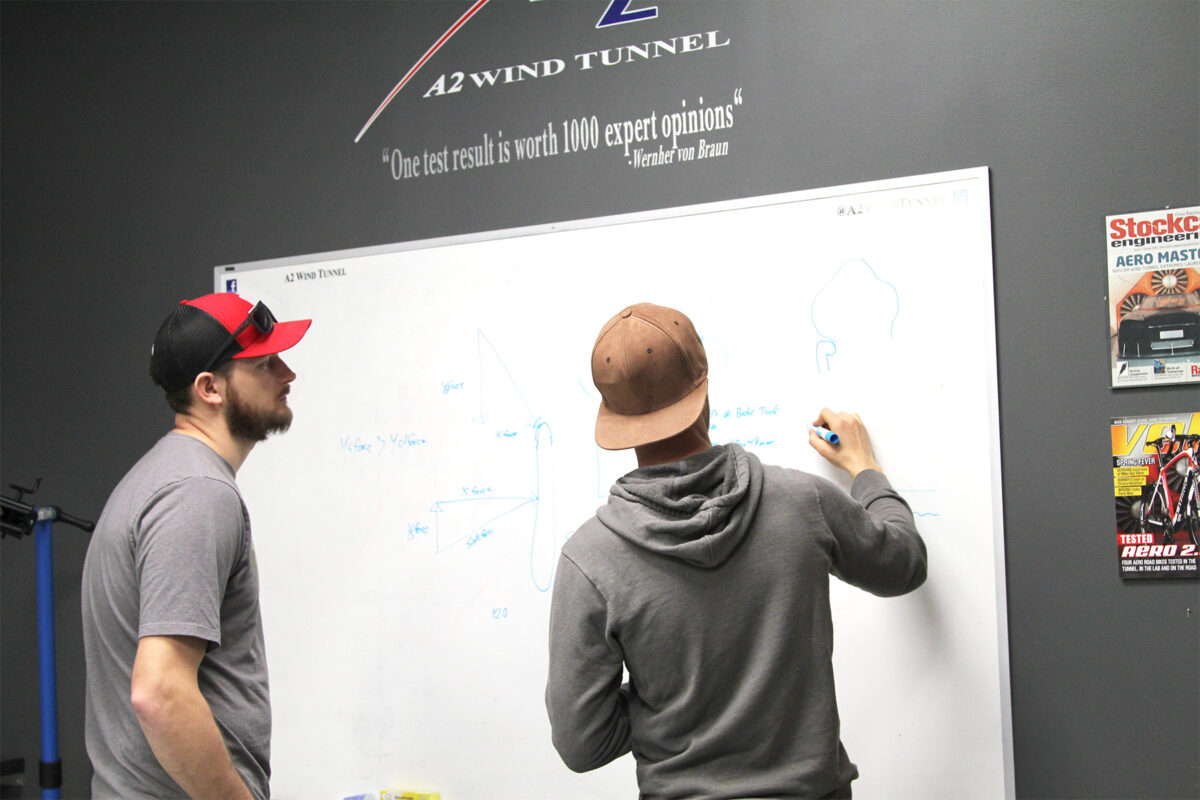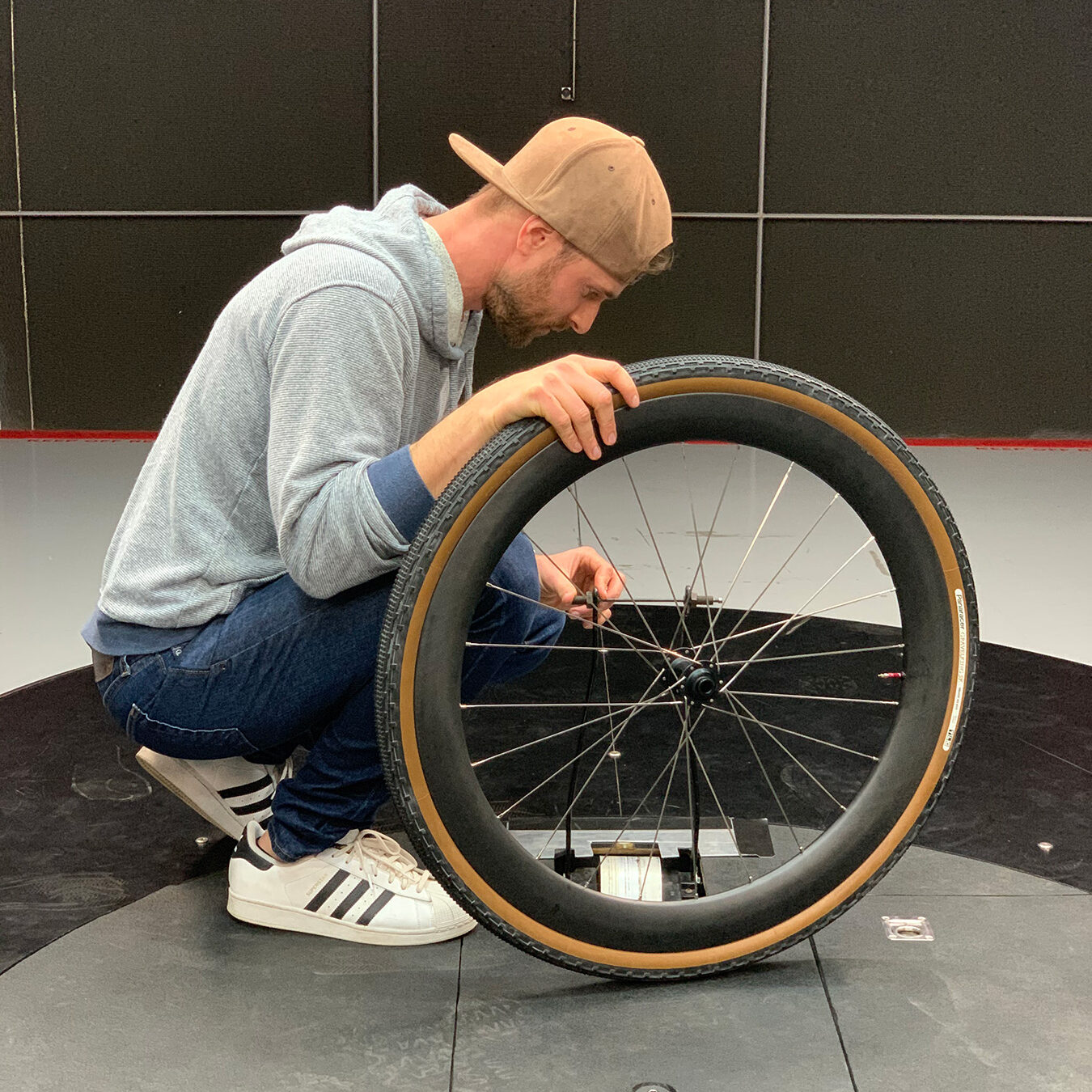In early 2020, we released aerodynamic gravel wheels. During the design, we proved that you could save 11 watts compared to a standard box gravel wheel even with tires as large as 47mm. This is the same savings you have for road/triathlon cycling. I believed it would become accepted that gravel wheels could be aero. Unfortunately, three years later, it’s not the case.
Recently, I read a popular article about aerodynamics and gravel cycling. Most of the article is great until I got the section on wheels. Cited from many wheel companies were guesses and results that showed little to no advantage with an aero gravel wheel. Based on our data, and in my opinion, they are wrong. What I know is getting this right was really hard. Additionally, changing the mindset of an industry is hard. What we need is more people to understand how and why a gravel wheel can be aerodynamic. Let’s talk through this.
How Aero Can Gravel Wheel Be?
It’s widely accepted that road wheels can be aerodynamic. The watt savings between a box rim wheel and an aero wheel is 11 watts. This is the same 11 watt advantage we mentioned earlier for gravel wheels. That fact alone is enough for most to understand the benefit of an aero gravel wheel. So why do people “think” gravel wheels can’t be aerodynamic? Let’s examine the most common beliefs and pitfalls in the design process.

The Tires Are A Problem
I’ve heard this argument for 10 years. The two arguments are that the tires are too wide, making the shape of the rim irrelevant, and the tread patterns are too aggressive to produce good laminar airflow.
In aerodynamics, there is laminar (smooth) flow and turbulent (rough) flow. Air flows smoothly or is “chopped up.” The more laminar the flow from the tire to a well-designed rim profile, the better your aerodynamic performance.
The belief with gravel tires is that they are so much wider than the rims that as the air leaves the tire it disconnects and becomes turbulent, getting rid of any aerodynamic benefit. The discussion around tread states that when the tread isn’t smooth, the air becomes turbulent as it works its way through the tread.
Does air disconnect from a large tire? Yes. Can a tread create turbulent airflow? Yes. Does this mean a gravel rim can’t be aerodynamic? No. The question is how. Let’s look further.
Attachment and Reattachment with Air Flow
One of my early trips to the A2 Wind Tunnel taught me that air that is attached tends to stay attached longer into a yaw angle sweep compared to when it reattaches after disconnection. Confused? I don’t blame you. When you design a protocol for a wheel in a wind tunnel you have to specify the sweep of yaw angles. When the wheel is straight down the wind tunnel the yaw angle is 0 degrees. When you turn the wheel into the wind, like turning the handlebars on a bike, the yaw angle increases. For example, a test starts at 20 degrees turned to the left and sweeps through to 20 degrees turned right. Since the wheel is shaped the same on both sides you would think the results from left 20 to 0 and 0 to right 20 would be the same, right? They are not. 0 to right 20 will always be better.
The reason for this is that when you start the test at 20 degrees to the left, the airflow cannot stay attached as it flows around the tire to the back half of the rim. It starts in a detached state. Once air is detached and turbulent, the air has to reattach to become laminar again. At some point as the yaw angle closes to 0, the air will reattach. The difference as you sweep from 0 to right 20 is that air stays attached longer into the sweep. This means that if the air reattaches at left 13 degrees it will stay attached past 13 degrees to the right. It’s easier for air to stay attached than to reattach. The increased angle range with attached air improves the aerodynamic performance since as we stated earlier, laminar flow produces a better aerodynamic result than turbulent air.
It became apparent that what makes a rim design perform well is not just how long you can keep the air attached but how well you can get air to reattach after becoming turbulent which also matters. This is the main component of our aero gravel line. FLO rims allow air to attach well after the air is detached or turbulent.
Making Air Reattach to a Cycling Wheel
The first and most important factor is rim depth. Most companies are looking at shallower rims, 40-45mm which is too shallow for aero benefits. Something deeper, in the 55-60mm range, is where you start to see large benefits. The G700 and G650 are the deepest gravel wheels we’ve ever seen produced at 54.9mm and 58.8mm respectively.

The width is also important. The wider the better. FLO rims are 33mm wide at the brake track with a 25mm internal rim width to keep mounting tires safe. (I’d love to make a 50mm wide rim but mounting tires would not be safe.)
The profile is also important. Ideally, hitting the width-to-depth ratio theory would serve the most aerodynamic benefit, but it doesn’t mean that there are no aero benefits if the ratio isn’t exact. We have to balance how deep the profile is to get reattachment. This is why an almost 60mm gravel wheel makes sense.
Deep Wheels and Cross Wind
The statement, “deep wheels are hard to handle in crosswind” is not accurate in today’s world. This argument dates back to when wheel rim profiles were triangles before any of the shapes of the modern rims were designed by companies like FLO. A 60mm rim in a crosswind felt like you were riding a bucking bronco. Today, our 77mm deep rims are more stable than old 40mm rims. When a rim is designed properly, you rarely have handling issues at 55-60mm of depth. Our rim design algorithm considers both the overall aerodynamics of a rim profile and its stability in the wind. Stability allows you, the rider, to stay in the aero position longer. Balancing both aerodynamics and stability makes you faster.
The benefit not discussed with a deep gravel wheel is its ability to absorb vibration from the leaf spring effect found in deep rim profiles. This alone far exceeds any negatives found in a deep wheel when introduced to the wind. A wheel that absorbs vibration stops bouncing, allows you to track the front wheel in a straight line, gives you better grip, and reduces rider fatigue.
Final Thoughts
I can’t stress enough that I didn’t write this article to call anyone out. This stuff is hard and old beliefs tend to stick around. I hope that over time, the truth about gravel wheels being aerodynamic is widely understood.

Co-founder at FLO Cycling. Jon manages the day to day operations and acts as the lead engineer for all FLO products.
